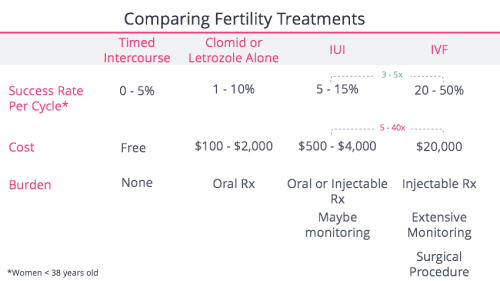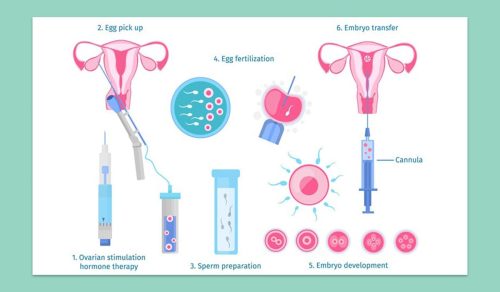Does Insurance Pay for IVF? Your Guide to Coverage, Costs, and Options
In vitro fertilization (IVF) can feel like a lifeline for people dreaming of starting a family. But with a single cycle often costing $15,000 to $30,000, the big question looms: Does insurance pay for IVF? The answer isn’t a simple yes or no—it depends on where you live, what plan you have, and even your employer. For many, navigating this maze of policies and costs is overwhelming, but you don’t have to figure it out alone. This guide dives deep into how insurance works with IVF, what’s covered (and what’s not), and how you can make it work for your family-building journey. Whether you’re just starting to explore fertility treatments or you’re knee-deep in the process, here’s everything you need to know—plus some fresh insights you won’t find everywhere else.
What Is IVF, and Why Does It Matter?
IVF is a medical procedure where eggs are retrieved from the ovaries, fertilized with sperm in a lab, and then placed into the uterus to grow into a baby. It’s a game-changer for people facing infertility, same-sex couples, or single parents-to-be. In 2021 alone, over 86,000 babies in the U.S. were born through assisted reproductive technology like IVF, according to the U.S. Department of Health and Human Services. That’s about 2% of all births—a small but growing number.
The catch? IVF is expensive. One cycle can include doctor visits, medications, lab work, and the procedure itself, racking up bills fast. For lots of folks, insurance coverage decides whether IVF is even an option. So, let’s break it down: what does insurance actually do for you here?
How Insurance Handles IVF: The Basics
Insurance coverage for IVF varies wildly. Some plans cover it fully, some cover bits and pieces, and others leave you footing the whole bill. Here’s the rundown:
- State Laws Play a Huge Role: As of April 2025, 21 states in the U.S. have laws requiring some level of infertility coverage, but only 15 mandate IVF specifically. States like Massachusetts, New York, and California have strong rules, while others, like Florida or Pennsylvania, leave it up to insurance companies or employers.
- Employer Plans Differ: If you get insurance through work, your coverage depends on your company. A 2023 Mercer survey found that 45% of companies with 500+ employees offer IVF benefits, but that drops to about 25% for smaller firms (200+ employees), per KFF research from 2024.
- Public Insurance Lags: Medicaid, which covers low-income folks, rarely pays for IVF. Only New York and Illinois offer limited fertility benefits under Medicaid, and even then, it’s not the full deal.
So, does your insurance pay for IVF? It might—if you’re in the right state or have a generous employer. But for most, it’s a patchwork of partial help or nothing at all.
Quick Check: Does Your State Cover IVF?
Here’s a snapshot of where IVF coverage stands in 2025:
| State | IVF Coverage Mandate? | Notes |
|---|---|---|
| California | Yes (starting 2025) | Covers 3 egg retrievals for large groups |
| Massachusetts | Yes | Full infertility treatment, including IVF |
| Texas | No (offer only) | Insurers must offer it, but it’s optional |
| New York | Yes | 3 cycles for large groups, no age limits |
| Florida | No | Up to your employer or plan |
Check your state’s laws—RESOLVE: The National Infertility Association has a handy list updated yearly.
What’s Covered (and What’s Not)?
Even when insurance does cover IVF, it’s not a blank check. Policies often split coverage into three buckets: diagnostics, medications, and the procedure itself. Here’s what you might see:
Diagnostics: Usually a Yes
Most plans cover tests to figure out why you’re struggling to conceive—like blood work, ultrasounds, or semen analysis. These can cost $500 to $2,000 out of pocket, so it’s a relief when insurance steps in. A 2020 KFF study found diagnostic coverage is pretty common, even in states without mandates.
Medications: Hit or Miss
Fertility drugs—like Clomid or injectables—can run $1,000 to $5,000 per cycle. Some plans cover them fully, others cap the amount, and many exclude them entirely. In states like New York, large-group plans must cover meds tied to IVF, but in Texas? You’re on your own unless your employer opts in.
The Procedure: The Big Question
The IVF process—egg retrieval, lab fertilization, embryo transfer—averages $12,000 to $20,000 per cycle without meds. Only those 15 mandate states require coverage, and even then, there are limits:
- Cycle Caps: New York and California cover up to 3 cycles; Illinois goes up to 6 egg retrievals.
- Out-of-Network Surprises: Even with coverage, some clinics or labs might not be “in-network,” leaving you with extra bills. NPR reported in 2022 on a couple who faced this in Florida—their “covered” IVF still cost thousands due to network issues.
What’s Not Covered?
- Storage Fees: Freezing embryos or eggs for later? That’s often out-of-pocket, around $2,000 for 5 years, per Fertility IQ.
- Donor Eggs/Sperm: Using a donor usually isn’t covered, adding $5,000 to $15,000 to your tab.
- Surrogacy: Most plans don’t touch this—it’s a separate, pricey path.
Why Isn’t IVF Covered More?
Insurance companies often see IVF as “elective”—not a medical must-have like heart surgery. But infertility is a medical condition, recognized by the American Society for Reproductive Medicine (ASRM). So why the gap? Cost is a big factor. The Cato Institute estimated in 2024 that universal IVF coverage could cost the government $7 billion a year. For private insurers, it’s a risk they’d rather pass to you.
Plus, there’s a cultural angle. Some argue family-building shouldn’t be an insurance burden—others say it’s a basic right. The debate’s heated up lately, especially after Alabama’s 2024 embryo ruling paused IVF there, sparking national chatter about access.
Real Stories: How Coverage Shapes Lives
Take Sarah, a 34-year-old teacher in Massachusetts. Her state’s mandate meant her insurance covered three IVF cycles. After two tries, she welcomed twins in 2023—total out-of-pocket cost? About $3,000. Contrast that with Maria in Florida, where there’s no mandate. Her employer plan didn’t cover IVF, so she paid $18,000 for one cycle. It failed, and she’s still saving for round two.
Then there’s Jamal, a single dad-to-be in New York. His large-group plan covered IVF, but only for married couples using their own eggs and sperm. As a single guy using a donor, he was out of luck—$25,000 later, he’s still hoping.
These stories show how coverage isn’t just dollars and cents—it’s about who gets a shot at parenthood.
Interactive Quiz: What’s Your IVF Coverage Like?
Answer these quick questions to guess your odds:
- Do you live in one of the 15 IVF-mandate states? (Yes/No)
- Is your insurance through a big employer (100+ people)? (Yes/No)
- Does your plan mention “infertility benefits”? (Check your handbook!)
- Mostly Yes: You’ve got a decent shot at some coverage.
- Mixed: It’s a coin toss—call your insurer.
- Mostly No: Brace for out-of-pocket costs.
New Trends in IVF Coverage: What’s Changing in 2025?
IVF’s been in the spotlight lately, and coverage is shifting. Here’s what’s new:
States Stepping Up
California’s new law, signed in 2024, kicks in July 2025. It mandates IVF coverage for large groups—up to 3 egg retrievals and unlimited transfers. That’s 9 million people who’ll get a boost. British Columbia, Canada, also launched a public IVF program in 2025, funding one cycle up to $19,000. Could the U.S. follow suit?
Employers Jumping In
Big companies like Google and Amazon now offer “unlimited IVF cycles” or egg-freezing perks to attract talent. A 2024 Maven Clinic report says fertility benefits are “table stakes” for top employers. Smaller firms are slower, but the trend’s growing.
Political Promises
Former President Trump pledged in 2024 to mandate IVF coverage if re-elected. It’s a long shot—Congress stalled on similar bills in 2023—but it’s got people talking. If it happens, it could flip the script nationwide.
Hidden Costs: What No One Tells You
Even with insurance, IVF sneaks in extra expenses. Here are three things other articles often skip:
1. Pre-IVF Testing You Didn’t Expect
Before IVF, some clinics require tests like genetic screening or endometrial biopsies—$500 to $1,500 each. Insurance might cover them, but not always. A 2022 study from the National Institutes of Health found 30% of patients faced surprise diagnostic costs.
2. Travel Adds Up
If your nearest covered clinic is hours away, gas, hotels, and time off work pile on. Sarah from Massachusetts drove 3 hours each way for her “in-network” doctor—$800 in travel costs per cycle.
3. Emotional Toll Meets Financial Stress
Studies from Stanford in 2024 show couples without coverage are 15% more likely to stop IVF early due to money woes. The mental strain of “Will this work?” plus “Can we afford it?” is real—and rarely discussed.
How to Check Your Coverage: A Step-by-Step Guide
Don’t guess—know for sure. Here’s how to dig into your plan:
- Call Your Insurer: Dial the member services number on your card. Ask: “Does my plan cover IVF? What about meds or diagnostics?”
- Talk to HR: If you’re with an employer, ask: “Did we opt into fertility benefits?” Some plans hide them under “specialty care.”
- Read the Fine Print: Look for terms like “infertility treatment,” “cycle limits,” or “exclusions” in your policy handbook.
- Get It in Writing: If they say yes, ask for an email confirmation—verbal promises don’t hold up.
✔️ Pro Tip: Record the call date, time, and rep’s name. It’s your backup if claims get denied later.
Making IVF Work Without Full Coverage
No coverage? You’ve still got options. Here’s how to stretch your dollars:
Financing Plans
Clinics often partner with companies like Future Family or ARC Fertility. They bundle costs (meds, procedures, even storage) into monthly payments—think $300/month instead of $20,000 upfront.
Grants and Discounts
- Baby Quest Foundation: Offers up to $15,000 for IVF, no income cap.
- CNY Fertility: Known for low-cost IVF ($4,000/cycle) if you can travel to New York.
- Clinic Discounts: Ask about multi-cycle packages—some knock 20% off if you commit to two rounds.
Tax Breaks
The IRS lets you deduct medical expenses over 7.5% of your adjusted gross income. A $20,000 IVF bill could mean a $1,500 tax credit if you earn $50,000. Check with a tax pro.
Crowdfunding
Sites like GoFundMe see tons of IVF campaigns—some raise $10,000+ from friends and family. Share your story; people want to help.
IVF Success Rates: Is It Worth the Cost?
Paying for IVF feels less daunting if you know your odds. The Society for Assisted Reproductive Technology (SART) tracks this yearly. For women under 35 using their own eggs, the live birth rate per cycle is about 50% at top clinics. Over 40? It drops to 15-20%. Frozen embryos hover around 30-40%.
Here’s a breakdown by age (2021 SART data):
| Age Group | Live Birth Rate (Fresh Cycle) | Live Birth Rate (Frozen Cycle) |
|---|---|---|
| Under 35 | 49.8% | 41.2% |
| 35-37 | 37.5% | 38.9% |
| 38-40 | 24.1% | 34.7% |
| Over 40 | 11.3% | 22.6% |
Worth it? If insurance covers even part, your risk shrinks. Without it, you’re betting big—but for many, that baby’s smile is priceless.
Three Fresh Angles You Haven’t Heard
Most articles stop at “check your plan” or “move to Massachusetts.” Here’s what they miss:
1. The “Mandate Gap” for Singles and LGBTQ+ Folks
State laws often assume IVF is for married, heterosexual couples. New York’s mandate, for example, covers three cycles—but only if you’re using your own eggs and sperm. Single folks or same-sex couples using donors? Excluded. A 2024 ASRM report calls this a “quiet inequity,” noting 40% of fertility patients now fall outside traditional molds. Advocacy’s growing—could 2026 bring broader rules?
2. Micro-IVF: A Cheaper Twist
Ever heard of minimal stimulation IVF? It uses fewer drugs, cutting costs to $5,000-$7,000 per cycle. Success rates are lower (20-30% under 35), but a 2023 study from the Journal of Assisted Reproduction found it’s a solid pick for younger patients or those with good egg reserves. Few blogs mention this—it’s a hidden gem for budget-conscious hopefuls.
3. Insurance Loopholes You Can Use
Some plans cover “infertility” but not “IVF” explicitly. A sneaky workaround? Get your doctor to code treatments as “medically necessary” for conditions like endometriosis or PCOS. A 2022 NPR story highlighted a woman who saved $8,000 this way—her insurer paid after a diagnosis tweak. Ask your clinic; they’ve seen it all.
Your Action Plan: Next Steps to Take
Ready to tackle IVF, covered or not? Here’s your roadmap:
- Assess Your Coverage: Use the steps above to confirm what’s paid for. Don’t skip this—it’s your foundation.
- Budget Smart: List every cost—tests, meds, travel. Add 20% for surprises. (A $15,000 cycle could hit $18,000 with extras.)
- Explore Alternatives: No coverage? Look at micro-IVF, grants, or clinics with sliding scales.
- Talk to Your Doctor: They can tailor a plan—fewer drugs, frozen transfers—to fit your wallet and odds.
- Build a Support Net: Join online groups (Reddit’s r/infertility is gold) for tips and emotional backup.
Poll: What’s Your Biggest IVF Worry?
Vote below—it’s anonymous, and we’ll share trends next month!
- A) Cost
- B) Success rates
- C) Insurance hassles
- D) Emotional stress
The Bottom Line: Hope Within Reach
Does insurance pay for IVF? Sometimes, if you’re lucky with your state or job. But even without it, there’s a path—financing, grants, or creative hacks can bridge the gap. IVF’s a marathon, not a sprint, and every step counts. In 2025, with new laws and employer perks popping up, access is inching forward. You’ve got more power than you think—dig into your options, ask the right questions, and keep pushing. Your family story’s worth it.




